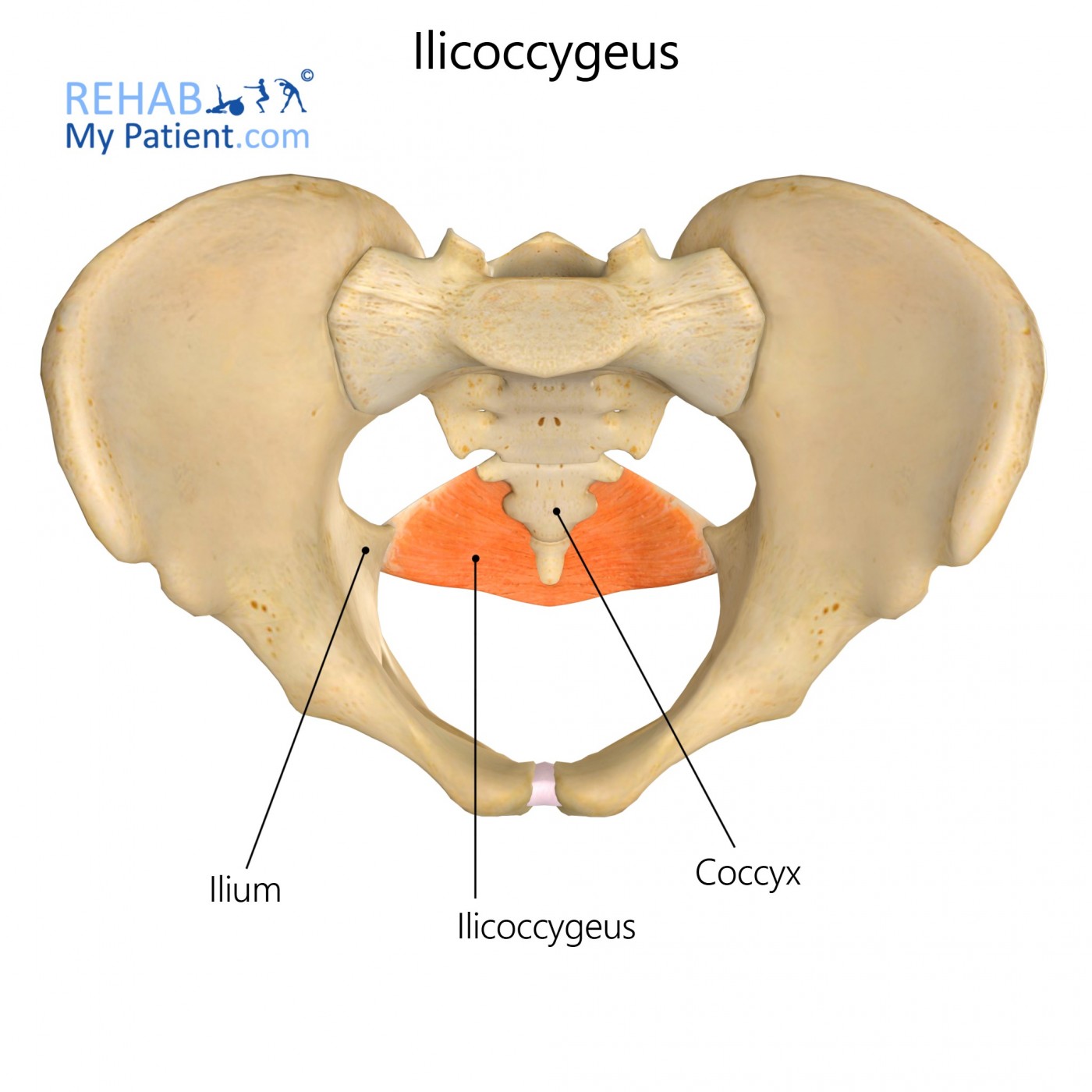Iliococcygeus
Opublikowano dnia 24th Jul 2020 / Opublikowano w: Biodro

General information
The Iliococcygeus is generally a thin muscle which, along with the pubococcygeus makes up the levator ani muscle.
Literal meaning
Iliococcygeus comes from the word iliacus, which is the medieval Latin term for the hip bone to which it attaches. Ancient Romans called it the “flank bone”.
Interesting information
Iliococcygeus is variable as it can be replaced almost entirely by fibrous tissue and is the muscle that is actually the “levator” of the muscles that make up the levator ani, as it performs elevation of the pelvic floor and anorectal canal.
Origin
Internal surface of obturator fascia between obturator canal and ischial spine.
Insertion
Forms a tendinous raphe with its opposite muscle posterior to the rectum and also attaches onto the sides of the coccyx.
Function
Compress the urethra, vagina, and anus; elevate the recto-anal junction; support pelvic viscera; increase intra-abdominal pressure; active in normal quiet inspiration.
Nerve supply
Pudendal nerve (S2 and S3) or from small direct branches of sacral ventral rami (S2 and S3).
Blood supply
Internal pudendal artery and inferior gluteal artery from the internal iliac artery.

Relevant research
A randomised control trial found that performing intensive pelvic floor exercises resulted in changes within the pelvic floor muscles at rest which may mean a decrease in the iliococcygeus volume.
Dierick, F., Galtsova, E., Lauer, C., Buisseret, F., Bouché, A. F., & Martin, L. (2018). Clinical and MRI changes of puborectalis and iliococcygeus after a short period of intensive pelvic floor muscles training with or without instrumentation : A prospective randomized controlled trial. European journal of applied physiology, 118(8), 1661–1671. https://doi.org/10.1007/s00421-018-3899-7
Iliococcygeus exercises

Pelvic floor lying
Lie down comfortably, bending the knees if you wish. Breathe normally and when exhaling, squeeze the muscles around your bladder and anus. The feeling is the same as when you stop yourself from urinating and passing wind. Avoid holding your breath, contracting your leg muscles or squeezing your buttock muscles, to ensure you’re engaging your pelvic floor muscles.
Zapisać się
Zarejestruj się już teraz, aby skorzystać z bezpłatnego okresu próbnego!
Zacznij korzystać z Rehab My Patient już dziś i zrewolucjonizuj proces przepisywania ćwiczeń, aby zapewnić sobie skuteczną rehabilitację.
Rozpocznij 14-dniowy bezpłatny okres próbny